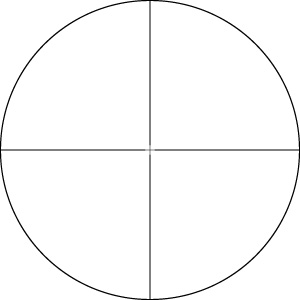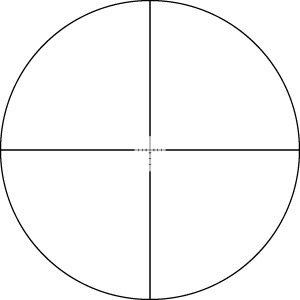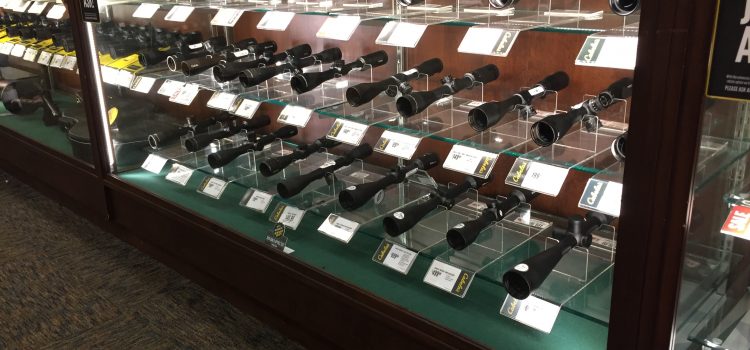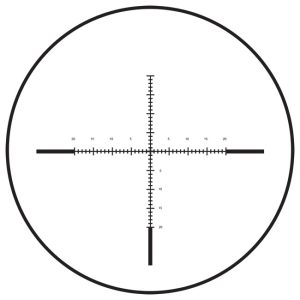Hunting deer is one of the most popular pastimes for hunters, whether it is for sport or survival. Almost every hunter dreams of coming home with a large buck that can either feed their families or become a trophy with the antlers mounted on the wall. On the other hand, deer hunting is not easy and is not for the faint of heart. However, a good rifle scope can help make it easier for you to become a successful deer hunter. Good optics help you identify a deer and get the perfect shot off. High quality scopes are necessary for hunting deer.
There are several different types of scopes that you might consider for deer hunting. Here are some of the characteristics to look for in a good scope for hunting all types of deer:
Magnification
For big game hunting, you will want to choose the best type of magnification. Scopes vary in their magnification from three times larger than the naked eye to up to forty-two times the naked eye. However, forty-two times magnification is probably a bit too much for hunting deer. A common magnification for scopes used for hunting deer range from 3x to 9x. This means that scope magnifies three times larger at the minimum and nine times larger at its maximum range. A good scope will have easy-to-use knobs to adjust the magnification so you can do it in any conditions.
Lens Size
Deer hunters also need a scope that has a good sized lens. When considering lenses, you want to check out the size of the objective lens (the lens on the end of the scope that allows the light to come in). The bigger the objective lens, the more light will enter, and the better the picture will be. Objective lenses are measured in millimeters, and the bigger ones are not necessarily better. The bigger the lens is, the more difficult it is to carry. A decent scope for deer hunting commonly has an objective lens size of 40mm.
Reticles
A reticle or plex, is the cross-hairs on a scope. They are the guidelines for aiming your shot. Reticles come in a wide variety of forms from cross-hairs to red dots. Even cross-hairs vary from thick or thin cross-hairs and dual-thickness cross-hairs. The best cross-hairs or reticles commonly used for deer hunting are a standard cross with lines that are thicker on the outside and then narrow at the point where the two lines cross (V-Plex). With that being said, there are other forms that work for different people. Another common scope that is coming on rifles from the factory include a Bullet Drop Compensator (BDC) reticle. The BDC can help guide you in adjusting for bullet hold over in varying distances. Another reticle that can be used is Mil-Dot. A Mil-Dot Scope can be used in measuring distances by using the mil-dots to find out how far out your target is. This practice has been used by the US Military for years.


<script async src="//pagead2.googlesyndication.com/pagead/js/adsbygoogle.js"></script> <!-- Content Square Top --> <ins class="adsbygoogle" style="display:inline-block;width:336px;height:280px" data-ad-client="ca-pub-6322371667784146" data-ad-slot="2509289144"></ins> <script> (adsbygoogle = window.adsbygoogle || []).push({}); </script>
Scopes for Close Range
If you plan on hunting deer at close ranges, one hundred yards or less, you will also want to consider getting a scope for shorter ranges. Scopes that are good for short ranges have a magnification range of 2x or 2.5x. Scopes with smaller magnification ranges will have a wider field of view, so you can take quick shots and easily track an animal that is moving. Some hunters choose fixed scopes for this purpose, meaning that the magnification cannot be changed. Other hunters prefer variable scopes so that the magnification is more versatile and can be adjusted down to a lower magnification when closer to the deer.
In contrast to close range scopes, long range scopes have a higher magnification for hitting targets at more than two hundred yards away. However, higher magnifications also come with a low field of view so it might be harder to spot an animal and keep track of it. Good long range rifle scopes come with magnification ranges from 2.5-8x, 3-9x, or 3-10x. The best scopes for deer hunting let you shoot accurately up to four hundred yards away. Minute of Angle (MOA) vs Milradian (Mil or MRAD) Adjustments When discussing scopes, you’ll notice that the elevation and windage turrets will have either 1/4″ MOA or 1/10″ Mil. Do you really know the difference? When shooting in either MOA or Mils, it’s all dealing with angles. The MOA, in a nutshell, equals one click moves the POI to 0.25″ at 100yds and and 2.5″ at 1000yds. This is one of the easiest units of measurement when looking at scopes. Milradian has been used by the US Military since WWI by the artillery units and can be a little confusing. If you use a Mil or MRAD scope, and move one click (0.1Mil), it will move the POI by 0.36″ at 100yds. One common mistake that scope manufacturers are making is that the scope will have MOA adjustments but has a Mil-Dot reticle. This can add to the confusion when trying to sight in and to make adjustments. If you want to do Mils/MRAD then make sure the reticle is a Mils/MRAD reticle. For long range shooters, the Mil/MRAD reticle will be a better option because you can dial in your shot using the math to find out distance. To be honest, most of the gun manufacturers are using MOA scopes on their rifles coming from the factory. All-in-all, pick what ever adjustments will be easiest for you, either Mil/MRAD or MOA. Traditionally, scopes of the past have been MOA. Scopes for Night Hunting Deer are the most active at night, specifically at dawn and at dusk. Deer also have incredible night vision. Thanks to technological advances rifles scopes can now come with night vision. These scopes use infrared illuminators. These scopes are also fitted with illuminated reticles that are usually etched onto the lens. Of course, more expensive right vision scopes will have better illuminators that allow you to shoot more accurately from longer distances. Night hunting for deer might not be allowed in some states or there might be certain restrictions on it, so be sure to check what the laws are where you live. The right rifle scope for deer hunting can give you a leg up when you are searching for that elusive buck. Rifle scopes for deer hunting come in a variety of types depending on: their magnification, lens size, and type of reticle. You can also hunt deer with scopes made for close ranges, scopes made for longer ranges, and scopes for hunting at night. Whichever type of scope you choose, the right high-quality scope will help you become a successful deer hunter, whether you hunt for survival or just for sport. Good scopes can make all the difference both for you and the deer. ***This guest article was written by Douglas Brooks. He is the founder of ProReviewly.com. He was enthusiastic about hunting from the first shot. He is also a rifle optic guru.***


